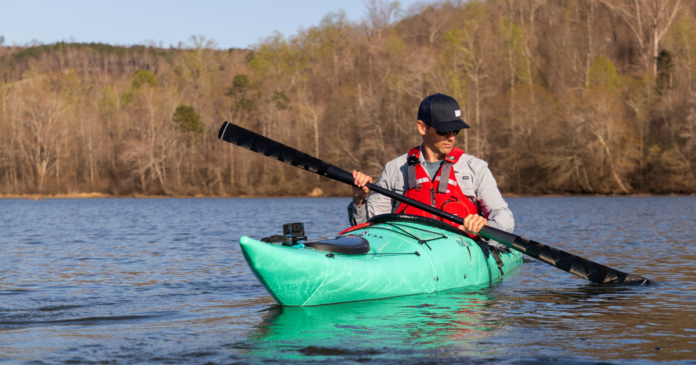Choosing a touring kayak, any kayak, can be intimidating. There are so many options available. Touring Kayaks are some of the most popular kayaks on the market, but there's a huge range in styles. So here is everything you need to know about the different types of touring kayaks available.
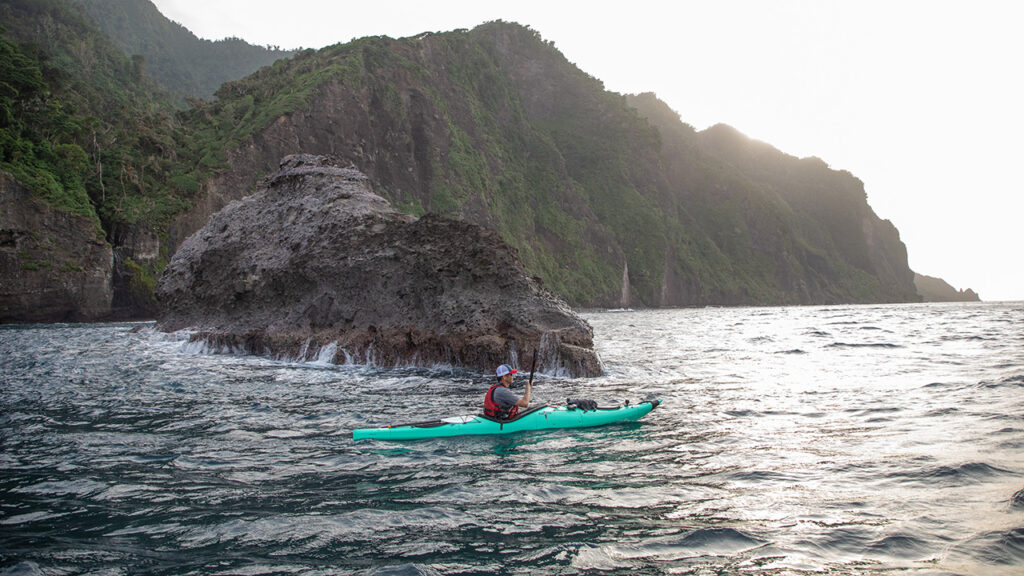
Types of Kayaks
When you are choosing a kayak there are three big choices you have to make. Do you want a portable or hard-shell kayak? Would you rather use a sit-in or sit-on-top kayak? Do you want a paddle or a pedal-driven kayak?
Once you’ve narrowed down the options you need to decide if you want a recreational kayak, a touring kayak, or a sea kayak. While this blog post is all about touring kayaks, let’s break down the basics of the different kayak categories of kayak that exist.
Two big factors help determine what type of kayak you are looking at, and that is length and width. The longer and narrower a kayak is, the more effectively it will travel through the water.
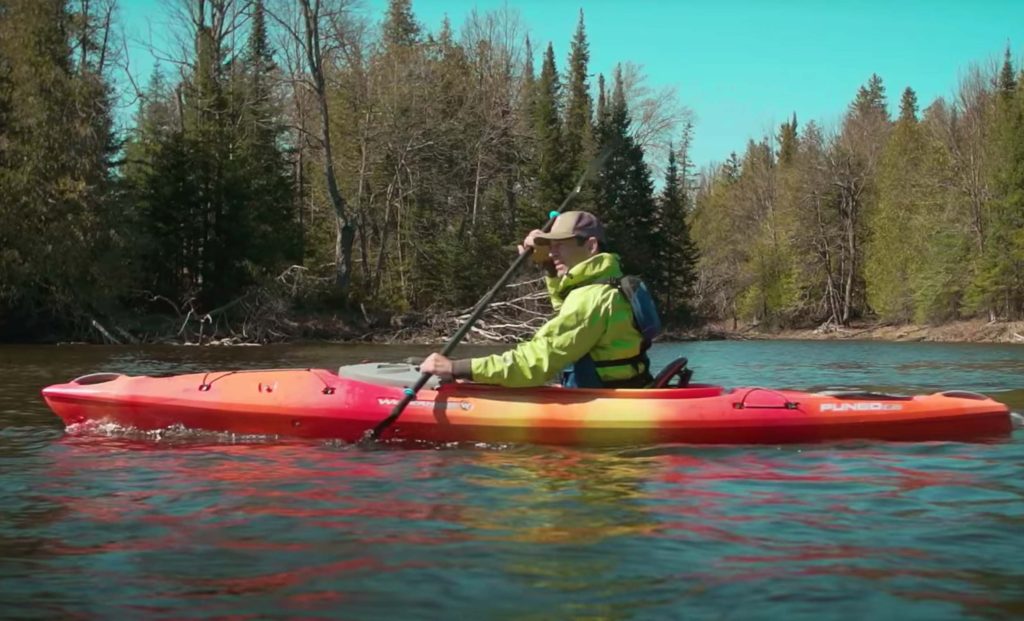
Recreational Kayaks
These are kayaks that prioritize stability. This comes at the cost of speed and performance. Recreational kayaks are usually between 9’-12’ long. These kayaks are the widest kayaks available at around 30+” wide. This also means that they are the slowest because they are pushing the most water and therefore create the most resistance.
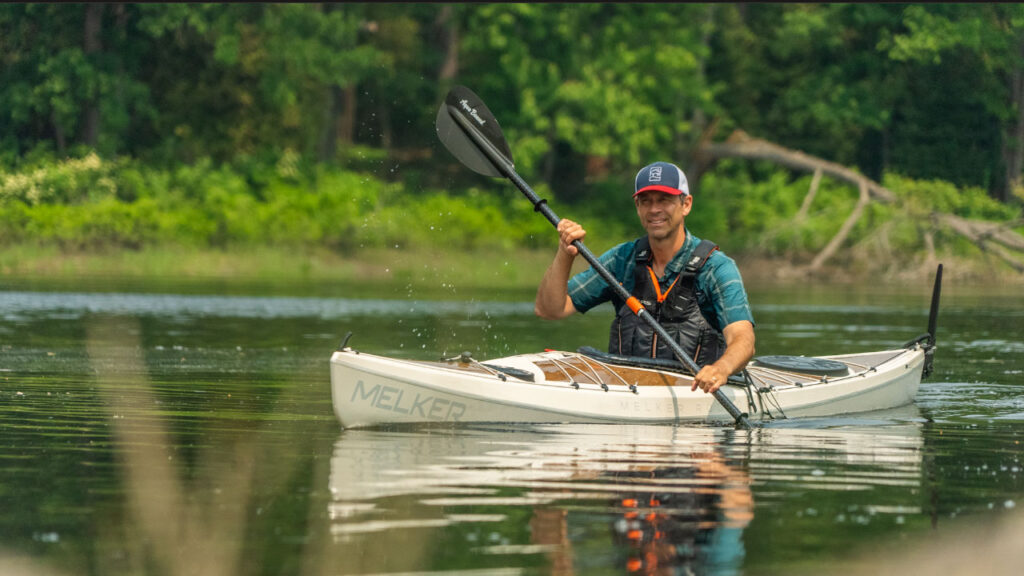
Sea Kayaks
These prioritize performance. They travel as quickly and efficiently through the water as possible. Sea Kayaks are usually between 14’-18’ long and about 22”-24” wide. While these were originally designed to be used on the sea, they can be great on lakes, rivers, and ponds too. They are not exclusive to the ocean.
Touring Kayaks
Touring kayaks fit in the middle of these two categories. They provide a great balance of stability and performance. They are kayaks that are still relatively stable but are also fun to paddle. Touring kayaks are usually between 12’-16’ long and 24”-30” wide.
Which Different Touring Kayaks Are Available?
There are many different names for touring kayaks. But I typically categorize touring kayaks into three different groups:
- Recreational touring kayaks
- Touring Kayaks
- Performance Touring kayaks
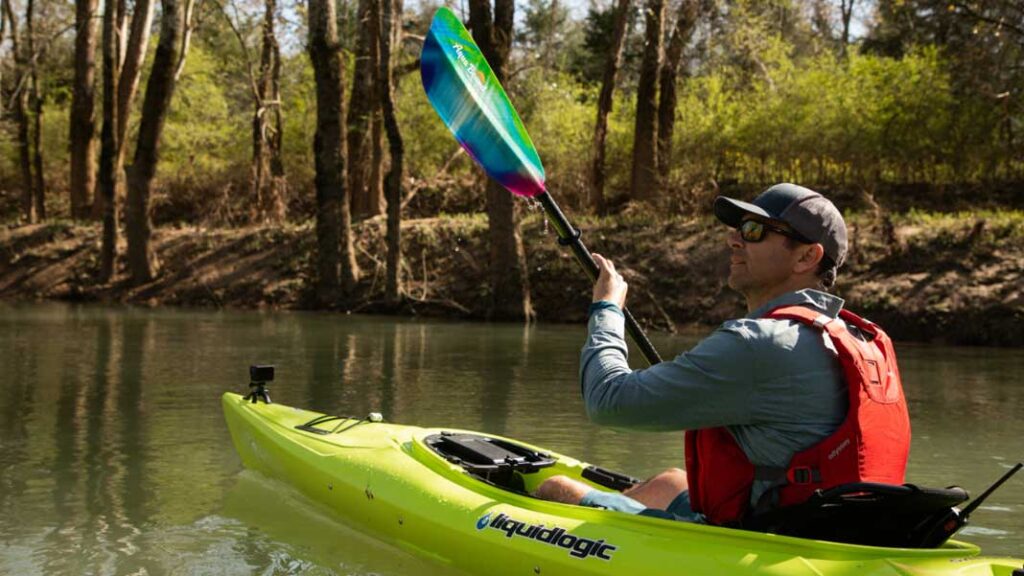
The Recreational Touring Kayak
This kayak is in a class of its own. It is a kayak that is not designed for rough water but is designed to be a fun and efficient kayak to paddle in calm water. It gives up some stability for the “fun factor”. Recreational touring kayaks tend to be a little wider at around 26”-30”.
You should not take a recreational touring kayak into rough water for a number of reasons. They tend to have big cockpits so that the kayaker doesn’t feel confined. This means that they can not take a kayak skirt. They also often only have one bulkhead in the back. A bulkhead is a wall in the kayak that separates it into different sections. These are important in rough conditions because without them a lot more of the kayak can fill with water if you flip.
Recreational touring kayaks are also not designed to be rolled. So if you ever want to learn to roll then these are not the right kayaks for you.
A great example of a recreational touring kayak is the Liquid Logic Saluda.
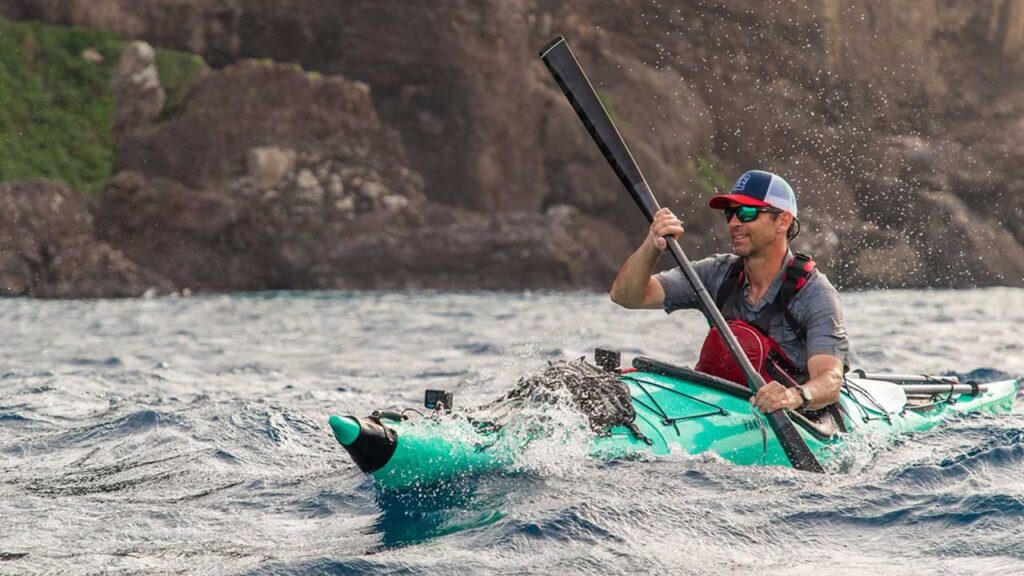
Touring Kayaks
The basic touring kayak is a kayak for use in all conditions. They have two bulkheads, one behind the seat, and one just in front of your feet. So if you do flip it is only the center cockpit area that gets swamped. This makes rescues much easier. They also tend to have smaller cockpits that are designed to take spray skirts. You can roll a touring kayak.
Touring kayaks tend to be a little narrower than recreational touring kayaks with a width of between 25” and 27” inches.
A great example of a touring kayak would be the Pakayak BlueFin 142 which is 14’ and designed to handle both rough and calm water. It's an all-round and do anything touring kayak.
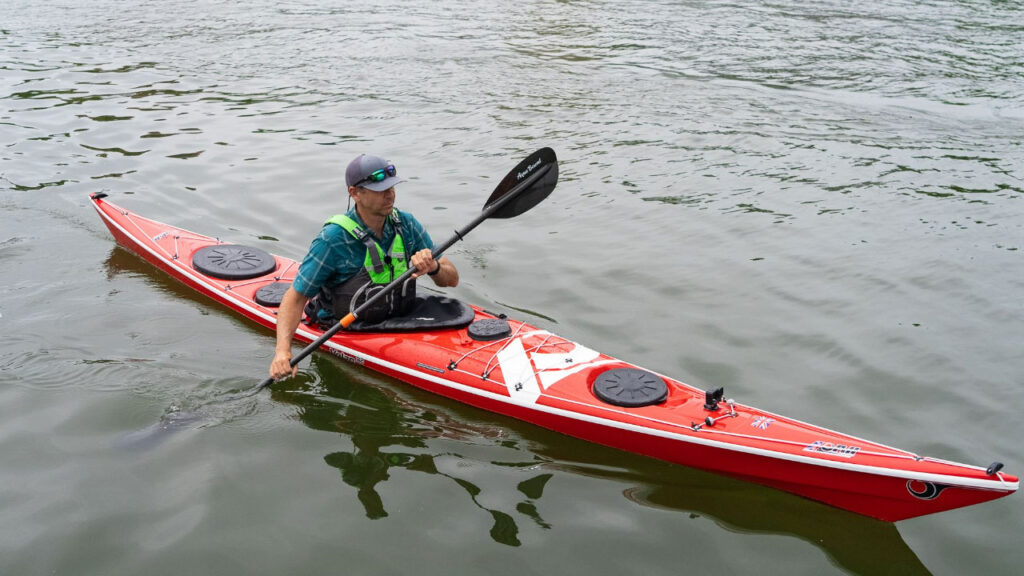
Performance Touring Kayak
Performance touring kayaks are the next step up. And truthfully performance touring kayaks and sea touring kayaks are very similar. I tend to use the term interchangeably.
Perfomance touring kayaks can perform well in any conditions. They travel very efficiently through the water and allow you to travel long distances with ease.
How are they high-performance? Well, they have the same size cockpit as touring kayaks, they are designed to be used with a skirt and tend to have more conforming seats.
Performance touring kayaks are designed to be as rollable as possible. Usually, you can customize the hip and thigh hooks so you can get support in the right places. This helps with edging and rolling the kayak.
They also have low back decks to make it easier to roll.
Performance touring kayaks tend to be narrower, longer, and faster, in general just higher performance. But they do give up a lot of stability for that. Some of them can even feel a little tippy.
To use performance kayaks safely in all conditions you need to have a guide with you or prior training. This is particularly the case if you are going to be traveling further from shore than you can swim.
A good example of a performing kayak is the P&H Volan. It is a carbon Kevlar kayak that is a work of art!
Who Are Touring Kayaks For?
To sum it all up the big question is, who are touring kayaks for?
Recreational Touring Kayaks
These are really for anyone who wants a kayak that will be fun to paddle. They need to be willing to give up some stability for a kayak that will travel through the water a little faster. But they will need to stick to calm conditions.
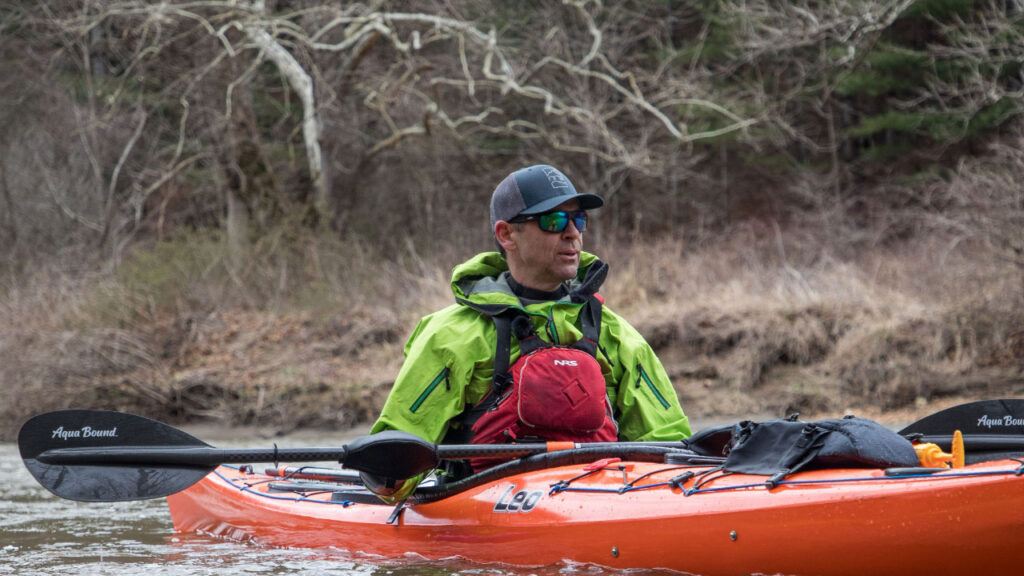
Touring and Performance Touring Kayaks
Performance and touring kayaks can be used by anyone from novices to experts. These can be used in calm conditions by anyone looking to paddle a kayak that moves efficiently through the water.
These kayaks also open the door to rougher water paddling, learning how to roll, and playing around in ocean surf. They allow you to enjoy a wide variety of calm and rough conditions and different paddling activities. But many of these activities will require training.
The further you go down the road with performance touring kayaks the more opportunities you will have to push your limits and have fun.
Find Your Kayak
There is a kayak out there for everyone: for each individual body size and shape and for every reason that someone might want to go paddling. Once you find the right boat for you it's amazing how much fun you can have on the water.

Kayaks: Pakayak Bluefin 142, Wilderness Systems Pungo, Liquid Logic Saluda, Melker Rodloga, P&H Volan 160, P&H Leo
Paddles: Aqua Bound Manta Ray Hybrid
PFD: NRS Odyssey PFD (Touring and Rec)
Clothing: NRS Short Sleeved Guide Shirt
Sunglasses: Wiley X



